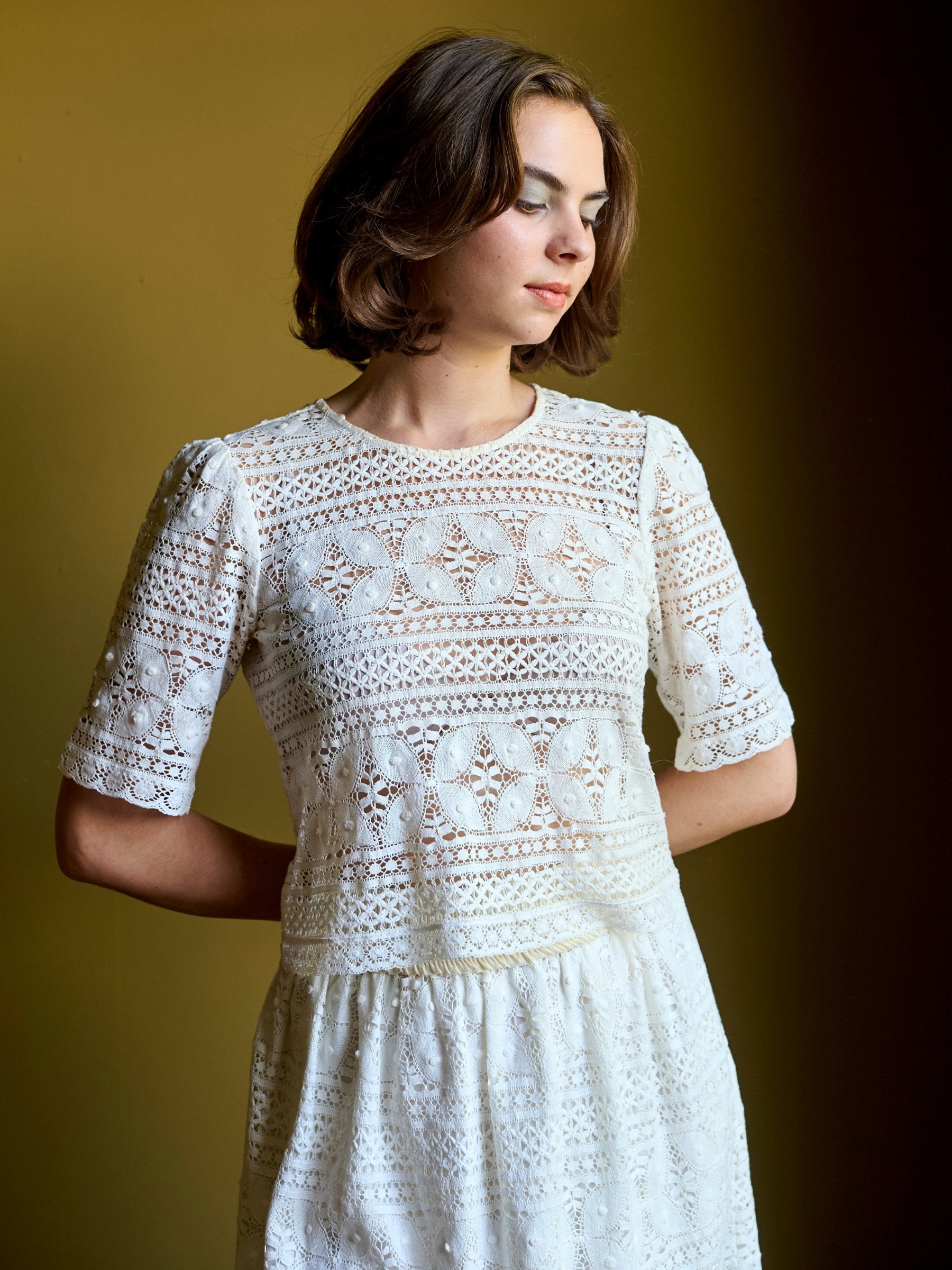Wash Care Guide
At Justine Tabak, we design timeless, practical clothing with care—pieces to be loved and worn for years to come. That’s why we choose natural materials known for their strength and longevity. With the right care, your dresses and jumpers will stand the test of time.
As a general rule, we recommend minimal washing—it's gentler on both your clothes and the planet, helping to save water, detergent, and energy. Simple habits like hanging your dresses after wear or neatly folding your jumpers will also help keep them looking their best.
A quick note: Please avoid tumble drying your garments. It almost always causes shrinkage and comes at a high cost—to both your wallet and the environment!
Caring for Your Cotton
For machine washing, use a delicate cycle with cold water (30°C or below). When handwashing, use lukewarm water, as hot water can cause colours to fade. Gently agitate the garment in soapy water for a few minutes and be sure to rinse thoroughly. Afterward, squeeze out excess water and give the dress a good shake to minimize creases.
We recommend avoiding tumble dryers, as they consume a lot of energy and the direct heat can be harsh on your clothes. Instead, hang your cotton garments outdoors to air dry—this often leaves them almost crease-free. In colder months, hang them indoors (but avoid radiators), and they will dry beautifully.
Caring for Your Silk
Silk is a luxurious, delicate fabric that requires special attention to maintain its soft, smooth texture and vibrant appearance. With the right care, your silk garments will stay beautiful for years to come.
When washing silk, always turn the garment inside out to protect the fabric's delicate surface. We recommend hand washing in lukewarm water with a mild detergent specifically formulated for silk or delicate fabrics. Avoid using harsh chemicals or fabric softeners, as these can damage the fibres.
Gently agitate the garment in the water and avoid rubbing or wringing, which can distort the delicate threads. Rinse thoroughly in fresh, cool water until the water runs clear.
To remove excess water, carefully press the fabric between two clean towels—never wring or twist. Silk is best air-dried; lay the garment flat on a towel to dry, away from direct sunlight and heat sources to prevent fading and damage.
If you need to iron your silk garment, do so while it is still slightly damp. Use a low heat setting on your iron, and always iron on the reverse side or place a cloth between the silk and the iron to avoid damage. Alternatively, you can steam silk to remove wrinkles.
To store, keep your silk garments in a cool, dry place, away from direct sunlight. It’s best to store silk folded in tissue paper in a breathable garment bag to protect it from dust and potential damage.
By treating your silk with care, you’ll preserve its natural sheen and elegance for years of enjoyment.
Ironing: Use a cool or medium heat setting, and we suggest pressing the fabric on the reverse side while it’s still slightly damp to smooth out seams. Our Liberty Tana Lawn dresses typically don’t require ironing due to the fabric’s soft, silky texture that allows creases to naturally fall out.
Caring for Your Linen
Linen, made from the flax plant, is a lightweight, breathable fabric known for its strength and unique texture. It has a crisp feel compared to cotton, which means it creases and moulds more easily—something we love, as it allows each linen garment to adapt to the wearer, developing its own distinct character.
While some worry about linen shrinking, all our linen is pre-washed and softened before being crafted into dresses and trousers. With proper care, it won’t shrink further, and you’ll find it’s an easy fabric to look after.
To protect the fibres, always turn linen garments inside out before washing. Avoid washing with hard items like jeans or hoodies with metal zips, which can snag the delicate fibres. Don’t forget to fasten buttons, hooks, and eyes before placing your garment in the machine.
Wash in lukewarm water (30°C or less) on a gentle cycle or by hand, and avoid mixing colours in the same load to prevent fading.
Do not wring or tumble dry your linen—this can be harsh on the fabric and the environment. Instead, we recommend air drying. If the sun is out, be mindful of direct sunlight as it can fade richer colours (although we love how linen softens and ages over time). The exception is white linen, which will become even brighter in the sun!
Creases often fall out naturally when hanging, but if you prefer a crisp finish, iron your garment while it’s still slightly damp. Press from the inside to avoid shine, and spritz with water to help the moisture penetrate the fibres for a smoother result.
And remember—linen’s natural texture and gentle creasing are part of its charm. Embrace it! Our dresses are made from luxurious, weighty linen that’s been pre-washed, creating beautiful, soft ripples rather than stiff, lasting creases. Wear your linen with pride!
Caring for Your Corduroy
Corduroy, made from cotton and woven into distinctive "cords" or ribs, has a lush, velvety texture that gives it a timeless, durable appeal. For our dresses, we use a fine, soft microcord that’s wonderfully soft and fluid, adding elegance to the classic fabric.
Before washing, turn your garment inside out to protect the velvety texture (known as the pile) from getting crushed or worn down. This simple step helps preserve the fabric’s longevity and vibrancy.
To avoid creasing and preserve the fabric’s quality, wash corduroy with like colours and fabrics. Since corduroy is a slightly heavier fabric, avoid mixing it with delicate items. Use a gentle wash cycle to prevent unnecessary wrinkles. A note of caution—corduroy attracts lint, so steer clear of washing it with fabrics like towels, fleece, or wool that produce lint. While the lint can be brushed out, it’s a time-consuming task!
For drying, we recommend air drying only. Avoid direct heat from radiators or tumble dryers, as they can cause the fabric to stiffen and shrink. Simply hang your garment to dry naturally.
If you’d like to iron your corduroy, turn it inside out and use medium-high heat. This will smooth the fabric while protecting the pile.
Caring for Your Wool
We use 100% pure wool for all our knitwear—a luxurious, natural fibre that’s breathable and moisture-wicking. As a delicate fabric, we recommend hand washing only when necessary; often, a simple airing is enough to refresh your knitwear.
If you do choose to clean your knitwear, wash each piece separately using a delicate detergent specifically designed for wool.
Wash in lukewarm water, gently agitating the garment to clean it. Avoid soaking, wringing, or rubbing too hard. Rinse with fresh cold water, taking care to rinse until the water runs clear.
To remove excess water, gently squeeze the garment, then wrap it in a clean towel and press lightly. Please avoid tumble drying as it can cause felting and shrinkage.
While still damp, reshape your jumper and lay it flat on a towel to dry, away from direct heat and sunlight. If necessary, iron your jumper on the wool setting.
To prevent stretching, store your knitwear folded rather than hanging. Shake it out regularly to avoid moth infestations, and consider using vacuum bags for long-term storage.







